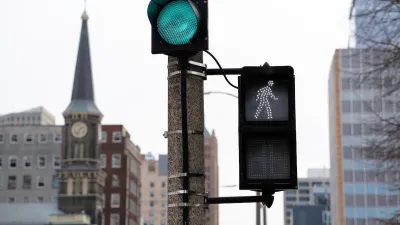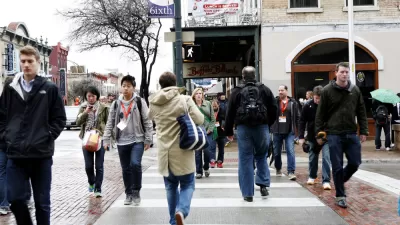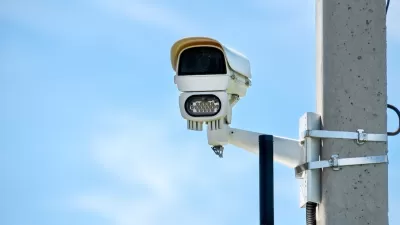An analysis of asphalt art around the country indicates that painted intersections and roads can dramatically improve pedestrian safety.

According to a new study reported on by Kea Wilson, “Installing asphalt art on roads and intersection can cut crashes between motorists and other road users by a staggering 50%,” showing that this relatively inexpensive intervention can save a significant number of lives. “In a new report from Bloomberg Philanthropies, researchers analyzed crash rates and driver behavior before and after traffic-calming art projects were added to the 17 US roads and intersections for which the best possible data and imagery was available.”
Not only did the projects slash crashes involving vulnerable road users in half, they also lessened injury-causing crashes by an average of 37%, and cut overall crashes by 17%, too. Drivers even yielded to pedestrians in colorful crosswalks 27% more often, even though many intersections featured high-visibility paint before.
Unfortunately, many policymakers haven’t recognized the utility of asphalt art. “The most recent proposed edition of the Manual of Uniform Traffic Control Devices — the document which sets the standard for most of the signs, signals and street markings that annotate the right of way— warned against colorful crosswalks, in part, advocates say, because existing AV technology struggles to recognize them as places where people walk.” Other concerns include whether pedestrians with vision impairments can safely navigate colorful art, and how cities can maintain street murals.
Janette Sadik-Khan, former New York City transportation commissioner and principal at Bloomberg, “stresses that researchers are just beginning to understand the power of public art to transform public safety — and that the cost of trying it is shockingly low.” According to Sadik-Khan, “Bloomberg’s initiative provides a blueprint that cities around the world can follow, and hopes the safety study will fuel more such art.”
FULL STORY: How asphalt art can protect vulnerable road users

Trump Administration Could Effectively End Housing Voucher Program
Federal officials are eyeing major cuts to the Section 8 program that helps millions of low-income households pay rent.

Planetizen Federal Action Tracker
A weekly monitor of how Trump’s orders and actions are impacting planners and planning in America.

Ken Jennings Launches Transit Web Series
The Jeopardy champ wants you to ride public transit.

California Invests Additional $5M in Electric School Buses
The state wants to electrify all of its school bus fleets by 2035.

Austin Launches $2M Homelessness Prevention Fund
A new grant program from the city’s Homeless Strategy Office will fund rental assistance and supportive services.

Alabama School Forestry Initiative Brings Trees to Schoolyards
Trees can improve physical and mental health for students and commnity members.
Urban Design for Planners 1: Software Tools
This six-course series explores essential urban design concepts using open source software and equips planners with the tools they need to participate fully in the urban design process.
Planning for Universal Design
Learn the tools for implementing Universal Design in planning regulations.
Ada County Highway District
Clanton & Associates, Inc.
Jessamine County Fiscal Court
Institute for Housing and Urban Development Studies (IHS)
City of Grandview
Harvard GSD Executive Education
Toledo-Lucas County Plan Commissions
Salt Lake City
NYU Wagner Graduate School of Public Service





























